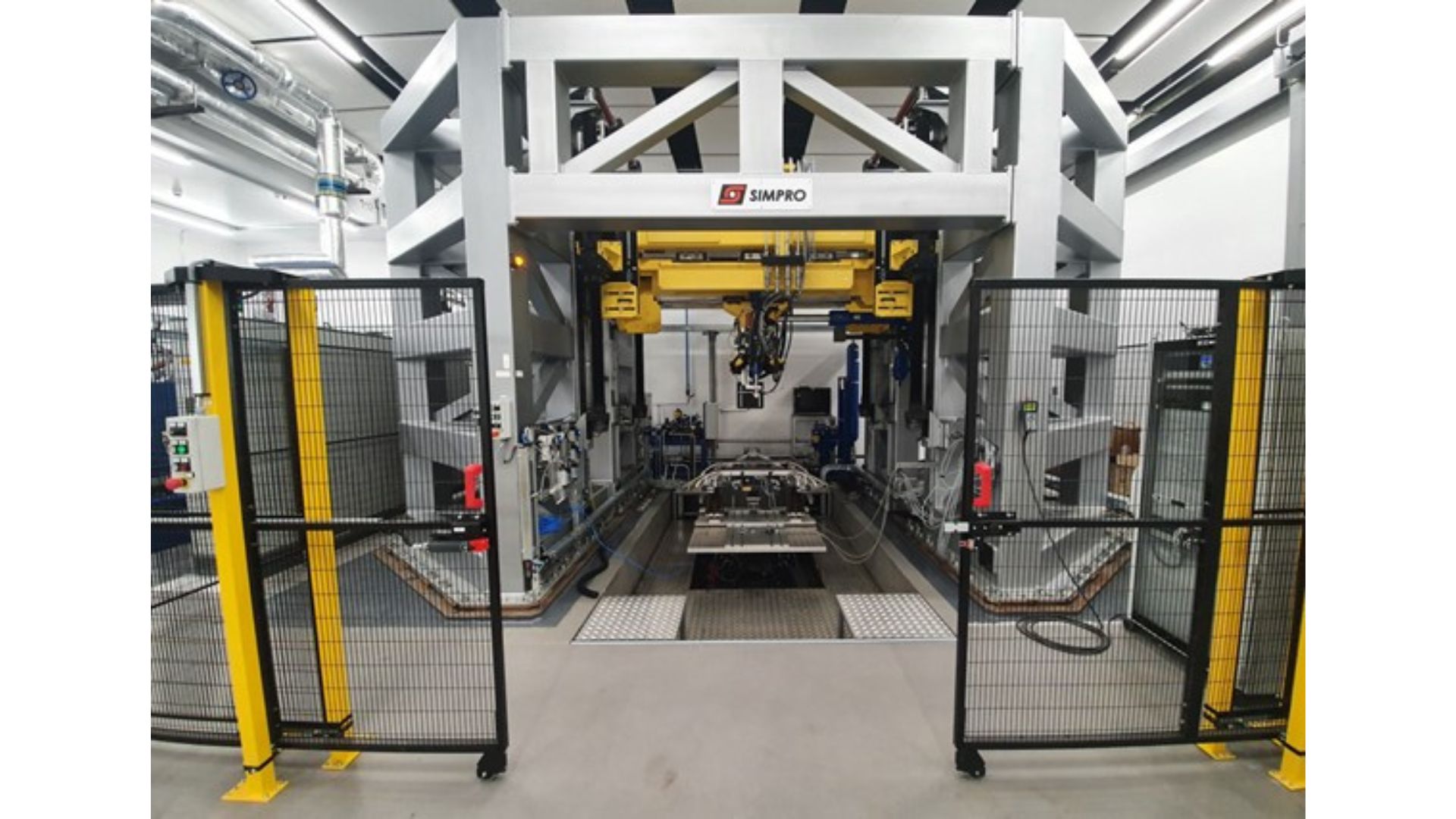
Full-Scale High-Performance Test Bench for Pantograph and Catenary Research and
Pantograph Test Rig
The full-scale pantograph test rig at the University of Huddersfield has several innovative characteristics and high-performance capabilities that make it, probably, the most advanced pantograph-catenary test bench in the world. It gives an answer to the industry demands by allowing to perform dynamic tests with speeds up to 500 km/h, on different types of pantographs for conventional and high-speed, enabling the analysis of existing pantographs or support the design and development of new ones. Furthermore, it allows to study/optimise legacy designs of catenaries and de-risk the development of innovative solutions for new/renewal infrastructure systems.
The main tests that can be carried out in the test rig include:
- Conventional and high-speed dynamic tests;
- Pantograph-catenary interaction dynamics in open and/or closed-loop;
- Measurement of contact forces, displacements and accelerations;
- Assessment of compatibility performance between the pantograph and the catenary;
- Test and validation of innovative sensing systems.
The dynamic tests can be managed using the hardware-in-the-loop methodology, with realistic catenary models. The pantographs under testing are pneumatically powered by the bench feeding and an adjustable DC power supply is also available, which allows powering the control systems for active/smart pantographs.
In order to represent the whole range of scenarios that the pantographs experience in service, the bench is equipped with a 6 degree-of-freedom motion platform, where the pantograph sits, that can mimic any train movement or vibration. The bench is also equipped with a set of last generation sensors to monitor forces, accelerations and displacements. These are necessary for the bench control system and for the measurement of the quantities required by the industry and/or defined in the rail standards.
General Characteristics
The test bench has an especially engineered frame and a complex bespoke seismic mass foundation to isolate the transmission of vibrations to the rest of the building where it is assembled.
The bench movements can be divided into 2 groups:
- The movements of the base plate take place by means of a 6-degree-of-freedom motion platform, supplied by Bosch Rexroth, which supports the pantograph and its operation reproduces the movements of the rail vehicles;
- The movements of the upper part of the rig, which impose the displacements to the pantograph head resulting from its interaction with the catenary, are carried out by three different groups of actuators, in particular:
- Height positioning actuators of the virtual catenary allow to simulate large vertical movements;
- Hydraulic servo actuators, capable of applying rapid movements up to 100 Hz and accelerations up to 4 g, are used for the vertical excitation of the pantograph contact strips, reproducing the behaviour of the catenary. These are also capable of inclinations of ± 5 °. Two HBM load cells allow measuring the contact forces.

The servo actuators of the test rig are powered by a hydraulic unit with two 132 kW motor pump groups and a 4000-litre tank. The pressure level is electrically adjustable in the range 70 ~ 280 bar.
The management of the bench actuators movement and the acquisition of the sensors data takes place through advanced electronic systems and a Real-Time machine. The system uses complex hardware-in-the-loop simulation techniques to develop and test the embedded pantograph-catenary system. It involves using models of any catenary type, which are feed into the test bench to mimic the dynamic response of the catenary that interacts, in real-time, with the full-scale pantograph (hardware) sitting on the bench.
Application Areas
- Flexibility for general experimental testing
- Development and optimisation of new and current designs
- Pantograph sensors calibration for experimental campaigns
- Active control
- Sensing systems
- Remote Condition Monitoring
- General performance parameters
- Component-level loads/stresses
- Forces (contact), accelerations, velocities and displacements
- Lumped mass model identification
- Frequency response analyses
- Realistic catenary models
- General track geometry (curves and straights)
- General pantograph trajectory and spatial position
- Pantograph vibrations
- Catenaries in wind conditions
For further information or to discuss your requirements, please contact Prof. João Pombo by email or by phone.